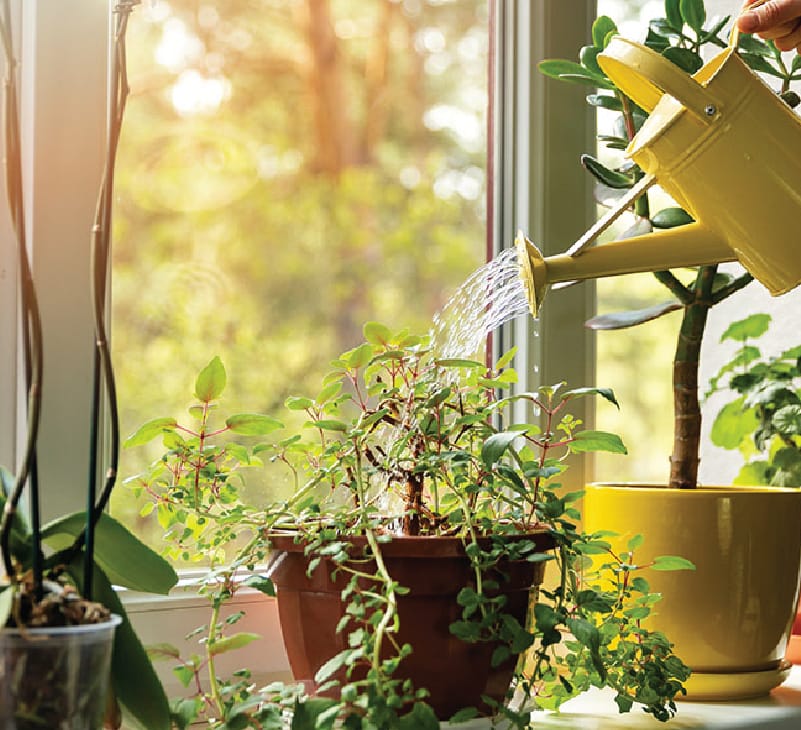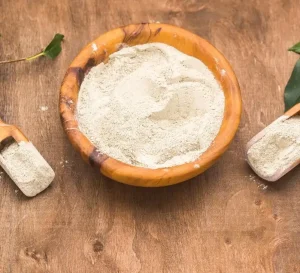
For centuries, the practice of Ayurveda has stressed on the healing power of nature. One of the natural ways in which you can improve the general well being of your life is by keeping household plants in your home.
Among the branches of Ayurveda are Śhālākyatantra, the treatment of ailments affecting ears, eyes, nose, and mouth. Rasāyantantra, which focuses on increasing lifespan, intellect and strength. And finally Vājīkaraṇatantra, which deals with infertility problems and spiritual development.
Indoor plants are known to absorb toxins which can cause such ailments in our body, including infertility, and they also increase our lifespan and aid in our spiritual development, as they help us get better acquainted with nature from the comfort of our own homes. It would not be a stretch then, to state that keeping plants in our homes is akin to following an Ayurvedic practice.
In our modern, hectic lives, we often turn to modern appliances for a quick and easy fix, forgetting what Mother Nature can offer us. Instead of burning a hole in your pocket buying the latest air purifier, why not invest in a living, breathing air purifier? Not only are indoor plants cheaper, but caring for them can improve our own well being by reducing stress and giving us a sense of fulfillment in life.
Below are eight air purifying plants, recommended by NASA.
Areca Palm (Chrysalidocarpus lutescens)

Areca Palm is a tropical plant, but can be kept indoors as a low-maintenance household plant. Areca palm is one of the few plants which can handle trimming without serious harm, making it possible to keep mature plants indoors for their full lifespan of up to 10 years. They are also non-toxic to dogs and cats. Areca palm helps remove major indoor air pollutants like acetone, xylene, and toluene.
Lady Palm (Rhapis excelsa)

The Lady Palm is a species that became popular worldwide for its low light and humidity requirements and ability to absorb harmful pollutants.
Rhapis adapts to a wide range of climates, soils, and environments and helps get rid of household pests. The plant also removes airborne toxins including ammonia, formaldehyde, xylene, and carbon dioxide.
Bamboo Palm (Chamaedorea seifrizii)

Bamboo palm, scientifically known as Chamaedorea seifrizii is a tropical palm. Not only does bamboo palm look good from an aesthetic point of view, but it also removes toluene and formaldehyde from the air.
Rubber Plant (Ficus Elastica)

The Rubber plant in its natural habitat grows over 30 metres tall, however, the varieties grown indoors are a much more manageable height of 1ft to over 8ft tall. It is quite an easy plant to care for and can grow well on low light. Rubber plants improve air quality by converting exhaled carbon dioxide into breathable oxygen.
The rubber plant also kills bacteria and mold spores which float through the air as part of its defense system. They can reduce mold and bacteria in a room by as much as 50 or 60 percent.
English Ivy (Hedera helix)

The English Ivy can usually be found crawling over walls and on the sides of buildings or fences. Ivies are seen throughout garden centers because of their beauty.
Well-grown ivies make wonderful trailing plants, climbing plants, and even indoor topiaries.The English Ivy absorbs benzene, formaldehyde, xylene and toluene.
Dwarf Date Palm (Phoenix roebelenii)

The dwarf date palm can be grown indoors and outdoors. It is evergreen, with thick branches, and has thick, shiny, smooth, leaves that grow in opposing pairs along the branches. It removes indoor air pollutants and is especially adept at removing xylene.
Boston Fern (Nephrolepis exaltata “Bostoniensis”)

The Boston Fern is a common fixture in many homes. It is easy to grow with low maintenance requirements, and is a versatile plant that can be kept in sunny or semi-shaded environments. It absorbs formaldehyde, xylene, and toluene from the air.
Peace Lily (Spathiphyllum)

The Peace Lily, Spathiphyllum is a striking plant which can make for a beautiful display in your home. A very well-grown Peace Lily may bloom twice a year, resulting in several months of flowers. The peace lily keeps the surrounding air clean by removing benzene and formaldehyde from the environment. However, we should be careful before bringing a peace lily into the house, as it can be toxic to pets.
The Takeaway
There is a widespread belief that pollution is a problem that only exists outside the house. This is not only false, but also a harmful belief as there are many indoor toxins and pollutants which can cause harm to the body and mind.
It is therefore important to filter such pollutants from the air. Not only are indoor air purifying plants a beautiful addition to your home, but they are cheaper to buy and take care of, than air purifying appliances. If you ever have a desire to go green, consider not only growing plants in your garden, but also bringing them indoors.























1 Comments